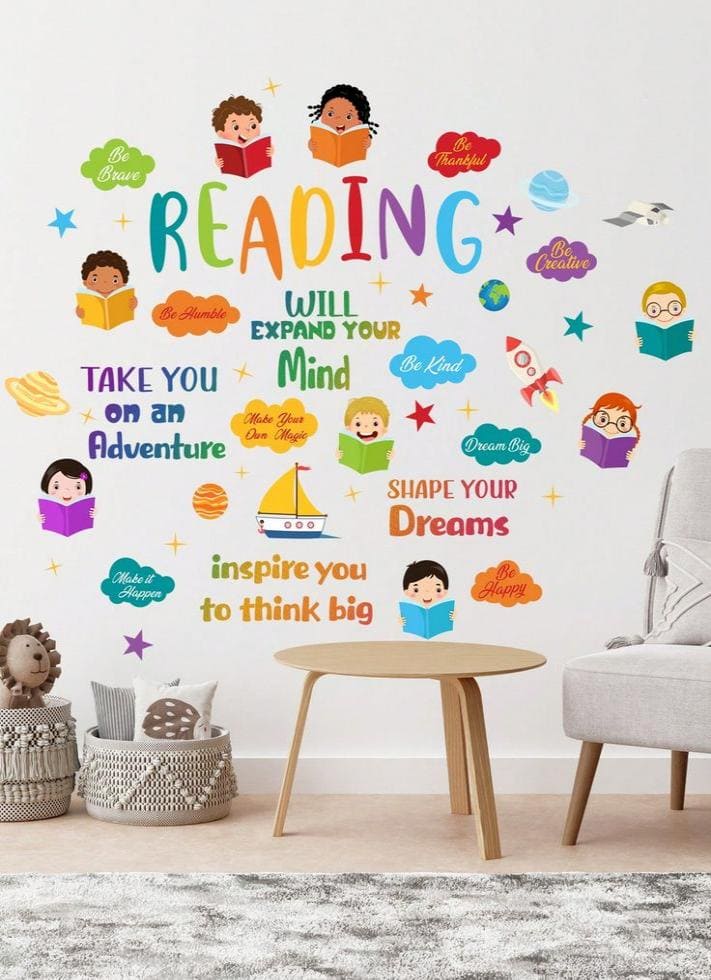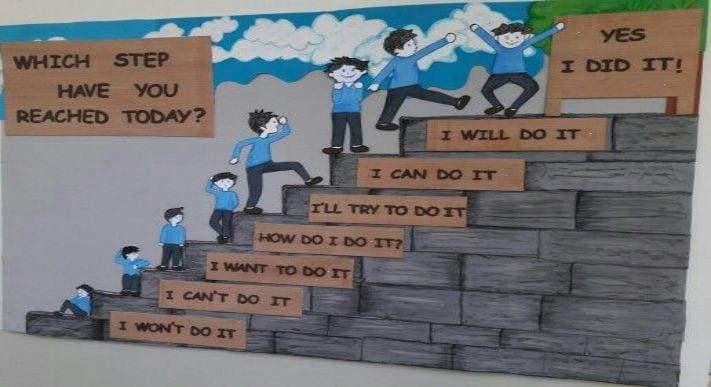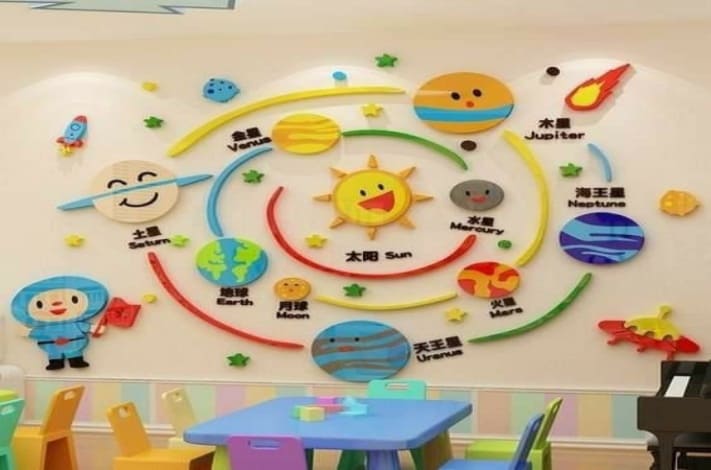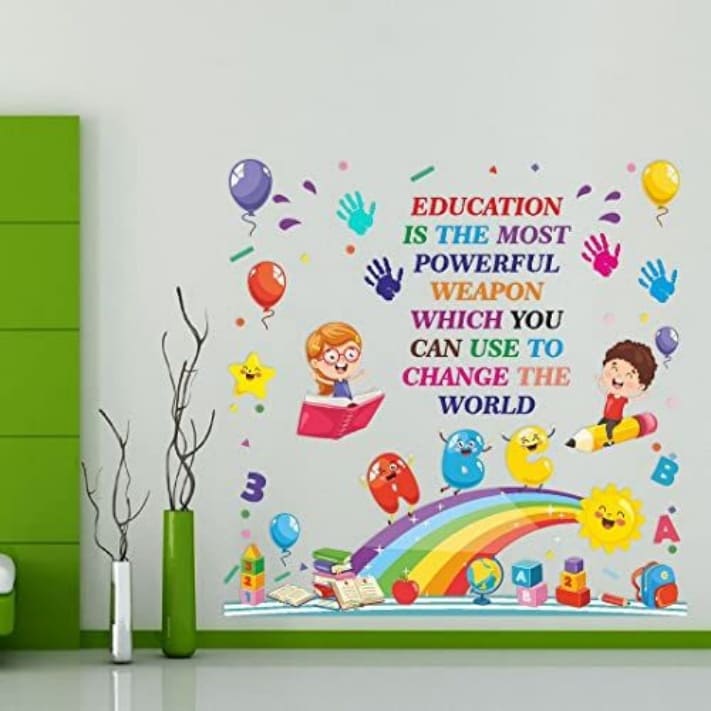Student engagement is an essential factor in learning. When you have meaningful and interesting activities, your class will be more focused and willing to participate.
So, how can you boost engagement?
One effective method is by incorporating an interactive word wall into the classroom!
Today, I’ll discuss how you can build a word wall your students will love. Let’s dive into creative ideas and games for a fool-proof word wall.
What Is a Classroom Word Wall?
A word wall is an ongoing collection of words that you display in a corner of your classroom. You place vocabulary words on paper and update them as needed.
These walls that teach are fun because you can create games based on them. You may organize the word wall and develop themes that supplement your topic for the week.
The visual nature of this teaching tool helps systematic learning across different disciplines. Studies show that word walls have promising success even in middle-level classrooms!
Why Should You Use a Word Wall?
Here are some reasons why teachers should incorporate word walls into the classroom.
- Boost Vocabulary Mastery: In 2021, research showed a significant difference in vocabulary mastery among students who had word walls in the classroom.
- Organize Topics: Word walls aren’t just for expanding vocabulary. You can use it for organizing lessons across different subjects.
- Promote Collaborative Learning: Word walls encourage students to work in groups. The interactive word wall created engagement, leading to more retained vocabulary.
- Prolong Attention: Because of the fun nature of the word wall, you can hold your class’s attention for longer. Plus, a word wall can break down difficult words to make texts accessible.
- Improve Academic Achievements: In an experiment, results showed higher test scores among students who learned through word wall methods.
- Track Your Progress: Having a word wall lets you track the lessons you teach. It also allows students to see how much they’ve learned throughout the year!
Image source: Pinterest
How to Build an Effective Word Wall
Here’s a step-by-step guide on how to build an effective classroom word wall.
1. Select Appropriate Words
The choice of words you use for the word wall shouldn’t be random. It’s best to come up with strategic words that your students will find useful and interesting. After this, design a sample word wall map to identify the best word arrangement.
For instance, you may incorporate vocabulary from the current unit or chapter you’re teaching.
Come up with a theme and use common words. Because you base the word wall on the curriculum, it’ll become a reference for your students even when class isn’t in session.
Here’s a fun tip. To make the word wall interactive, asking your students to suggest words for the wall is a great way to go!
2. Organize the Word Wall
You can organize a word wall in many ways – the most common ones being alphabetical, categorical, or thematic. The reason for organizing the word wall well is so students can find and reference words quickly.
Remember that word walls are visual aids. This means it should reinforce understanding. Word walls don’t have to be expensive. What’s important is that it’s easy to read and educational.
To organize the word wall, you can use color coding, charts, and patterns. Incorporate pictures if necessary. The simpler it is, the better!
3. Use the Word Wall Regularly
Regular interaction with the word wall is a must. Otherwise, your students won’t retain the information.
Add new words at least once a week, and make sure to discuss each word with the students.
You can do this by asking the students to use the words in context or play games involving the words. An example of a word wall activity is determining which category each word falls under.
It’s best to use the word wall as a reference throughout your lessons!
4. Build Continuously
An advantage of having a word wall is you can add to it as long as there’s space. This means you can build the word wall as you go through the curriculum.
It’s a great idea to map your word wall concept out so that your students have a visual chart of the lessons. The word wall will show the class how a new topic relates to an older topic.
Over time, your word wall can become a guide and review tool for your students!
5. Retire Words
Finally, if your word wall is out of space, you can retire the older words. However, make sure to make the retired words accessible to your students.
To retire words, you may move them to another part of the classroom or place them into a notebook. Allow your students to go through the retired words once in a while.
Doing this ensures your students refresh their memories!
Word Walls Per Subject
Here’s how to create a word wall per subject.
1. Math
Did you know that word walls are useful for teaching math?
You can include operations, measurements, and number sense on your math word wall. Mention vocabulary that would make it easier for your students to solve word problems.
For example, write words like difference, reduced by, or fewer than under the subtraction category. Use the word cards to establish connections between terms and have your students discuss them.
Image source: Pinterest
2. Social Studies
Social studies is a vocabulary-heavy subject that can benefit from a good word wall.
To create an effective social studies word wall, identify critical concepts for your students to learn. Use it to plan your daily discussions and evaluate individual responses to concepts.
Here’s an example.
In a history subject, you can revolve a lesson around colonization and share related events. Ask your students to debate over wealth and power, and build your word wall based on the results.
3. Science
There are plenty of opportunities to incorporate word walls into a science class! One of the best ways is to categorize words according to certain criteria.
For instance, you can ask students to arrange words like cells, ribosomes, viruses, and protozoans by size. You may also get the class to create connections between these words using the word wall.
Creative Word Wall Ideas
Word walls are flexible tools to add fun to your discussions. Here are some example word wall ideas you may want to try!
- Scrabble Word Wall: Jumble words and let your students figure out what the words are. You can give a prize to the student who first identifies the word.
- Charades and Pictionary: Divide your class into groups and have them act the words out.
- Word Wall Competitions: Host a competition to see who can design and organize the word wall the best. This idea is great because you encourage the students to become more invested in the word wall.
- Use Velcro: Instead of tape, use Velcro to make the word wall interactive. With Velcro, students may move the words around for activities.
- Story Writing Activity: Ask your class to write stories or poems using the words on your word wall. This can help your students understand how to use the words in context.
- Traveling Word Wall: Design a word wall that’ll take your kids around the world. You can have a huge map of the world and use string to connect concepts!
 Image source: Pinterest
Image source: Pinterest
Other Types of Word Walls
These are a few more types of word walls to try.
- High-Frequency Sight Word Wall: The words here are ones you’ll use the most often during discussions.
- Vocabulary Word Wall: This is the simplest form of word wall. Its purpose is to inform students on the meaning behind each word.
- Unit Word Wall: A unit word wall contains words belonging to a single topic.
- Pattern Word Wall: Pattern word walls help students combine and form words. You can divide the terms by prefix, suffix, and vowel digraphs.
The Takeaway
Word walls are fun and useful tools that’ll help you boost engagement in the classroom. However, they’re not simply for learning vocabulary.
You can use word walls to build concepts and provide a visual map of units in any discipline!





